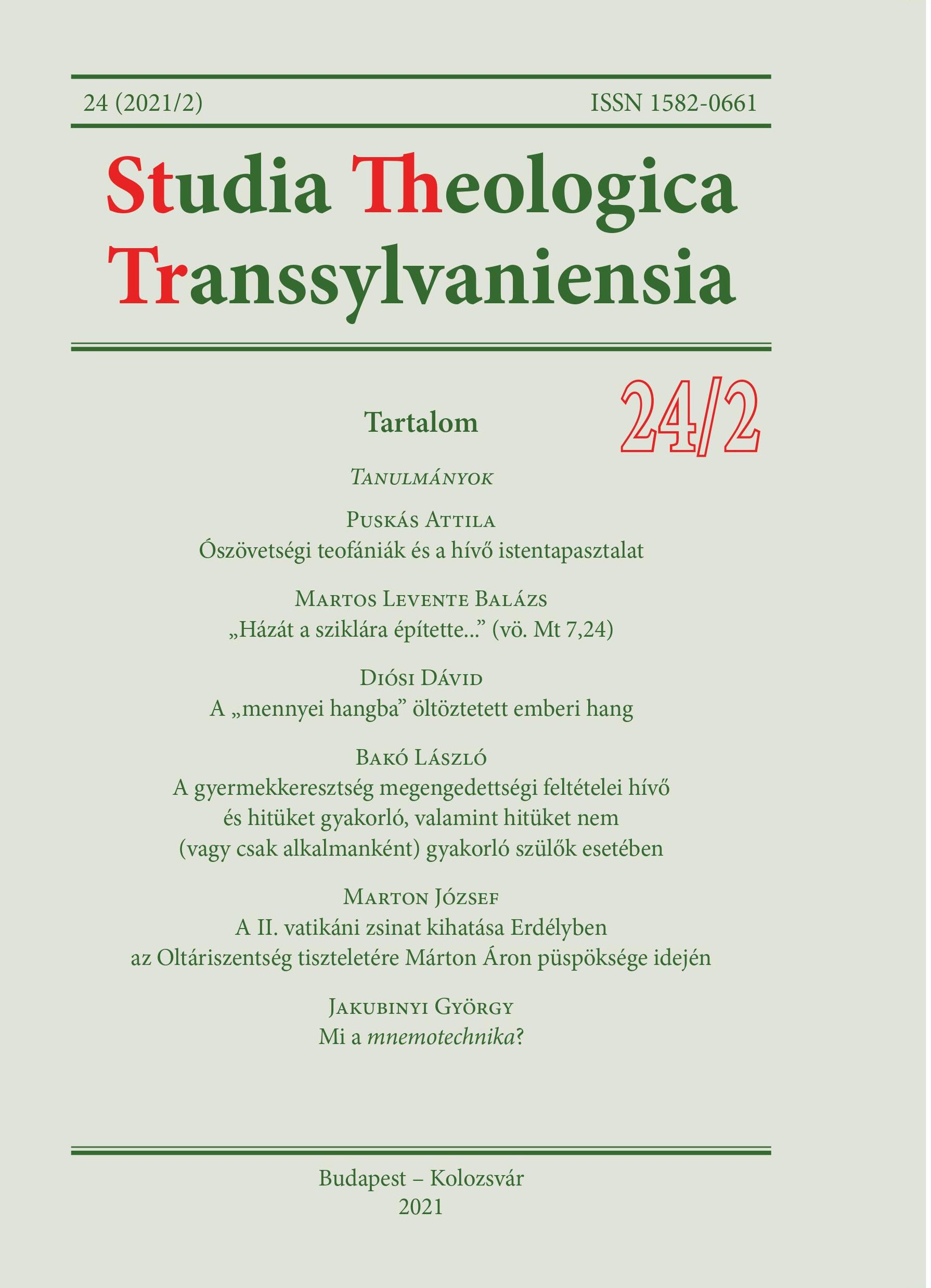A „mennyei hangba” öltöztetett emberi hang
A Tamás apostol cselekedeteiben szereplő "mennyei hang" fontossága a keresztségi szertartás rekonstrukciója szempontjából
DOI:
https://doi.org/10.52258/stthtr.2021.2.03Kulcsszavak:
Acts of Thomas, voice of heaven, baptismal ritual, baptismal eucharist, formula of confirmation, Amen, Apostle Thomas, Vazan, MygdoniaAbsztrakt
This study deals with the "heavenly voice" heard at the baptismal Eucharist in the Acts of Thomas. The "heavenly voice", which appears in two places in this context, is obviously a divine confirmation of an earthly event, and is to be understood as a formula of confirmation by the minister of baptism, which occurs in the liturgical practice (described in this work) after baptism and the liturgy of the Eucharist. Our detailed grammatical studies of the relevant passages, as well as the external sources consulted for this purpose, which were of great importance for the interpretation of our passages, have shown that it was the minister of baptism himself who, at the end of the rite of initiation, confirmed the completed baptismal Eucharist with a human formula of confirmation - clothed with the heavenly voice. The "heavenly audition" is therefore to be understood as a "narrative interpretation" of the baptismal liturgy, in which the emphasis is not on the mysterious heavenly audition itself, but on its "figurative power" in the plastic explanation of the consequences of the baptismal event. For the baptised it is primarily a matter of perceiving the "fourth dimension", the "sacramental" depth of the physically audible voice. The vox humana becomes the vox Dei for the baptised Christian.
Downloads
Megjelent
Hogyan kell idézni
Folyóirat szám
Rovat
License
Copyright (c) 2021 Dávid Diósi

This work is licensed under a Creative Commons Attribution 4.0 International License.






